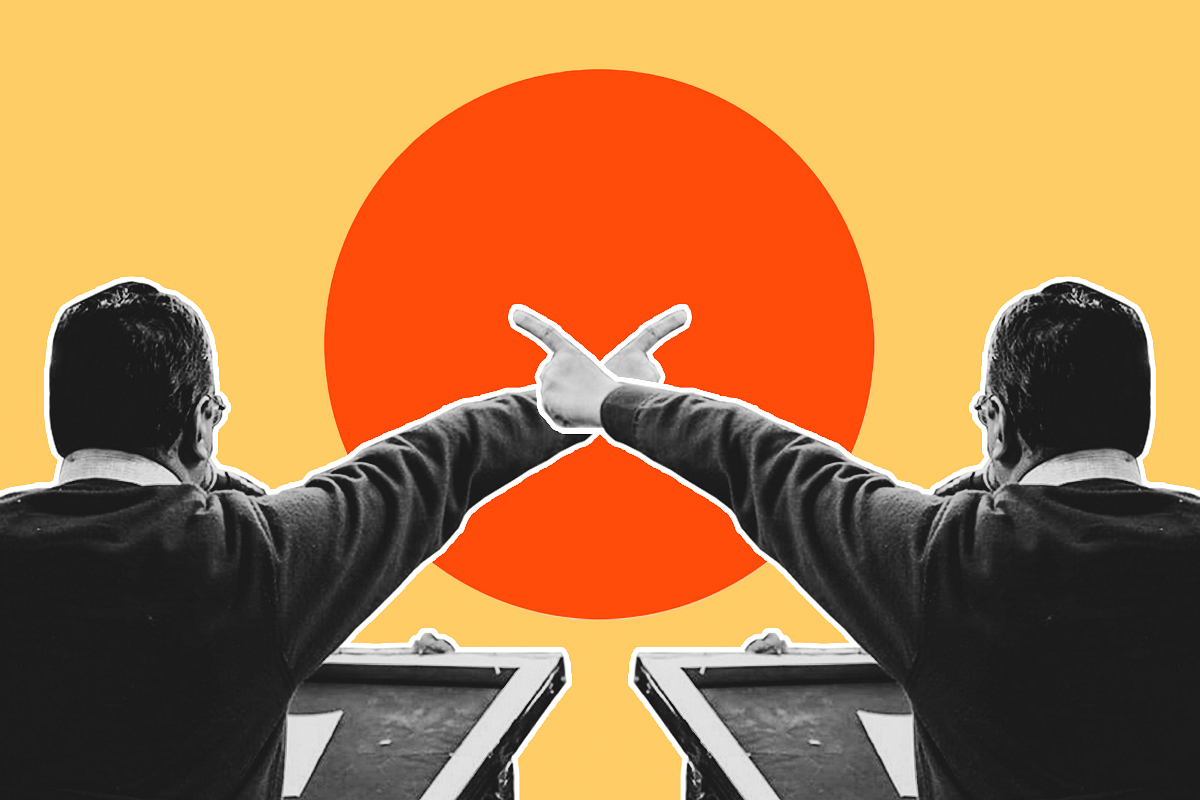Politics
How Not To Interpret The Delhi Election Results: Five Myths That Need Busting
- The Delhi results are unique to Kejriwal’s appeal and the BJP’s failure to provide an alternative to him.
- They prove nothing else.

Delhi Chief Minister Arvind Kejriwal.
The problem with working backwards from election results to explain why people voted the way they did is this: there is a huge chance that the explanations will be retrofitted to match the analyst’s biases.
This is obvious from the way the mainstream media has come to several unwarranted conclusions about the results of the Delhi Assembly elections, where the Aam Aadmi Party (AAP) won 62 seats to the Bharatiya Janata Party’s (BJP’s) eight.
For one, it is said that development and Arvind Kejriwal’s “Kaam ki Rajniti” defeated the BJP’s attempts to polarise voters over the Shaheen Bagh protests by Muslim women; two, Kejriwal’s “soft Hindutva” (including his awful recitation of the Hanuman Chalisa) now defines the new political centre, where the traditional Hindu voter has parted company with the politically active “Hindutva” voter; three, that the vote is against the Citizenship Amendment Act 2019; and, four, Kejriwal’s freebies won him the elections.
One cannot rule out these factors as key influencers for some sections of voters in this election, but none of them stand up to any scrutiny. The simple explanation for Kejriwal’s victory is that Delhi saw who would be their Chief Minister, and, overall, they saw him as at least trying to deal with some of their issues.
In short, Delhi voted for Kejriwal for the same reason why the nation voted for Narendra Modi. Voters were not in any mood to upset the rhythm of someone who was trying to do the right things, even if the results of their endeavours were far from certain.
The larger myths need to be countered, if not demolished.
Myth 1: Development kayoed religious polarisation. There is absolutely no evidence of this from the vote share numbers. What can broadly be said is that Muslims voted aggressively against the BJP, while Hindus voted less aggressively in favour of the BJP. In short, the polarisation was sharper with one community, and less sharp with the majority community. Over 90 per cent of Muslims voted against the BJP rather than for AAP or Congress or others. This polarisation was what made Kejriwal’s victory spectacular.
Myth 2: Hindus did not buy BJP’s sharp rhetoric on Shaheen Bagh. The vote share figures indicate that only the BJP gained share this time. In no previous election did the BJP manage to get more than 32-33 per cent of the vote. This time it got 38.5 per cent. The reason why it did not get more seats is probably related to its deficit in other areas. It provided no alternative to Kejriwal.
Myth 4: Freebies (water, power and bus rides for women) made all the difference. We cannot rule out the impact of these AAP policies on some voters, but the BJP offered its own measures, including regularising many illegal colonies, estimated to impact some 40 lakh people. Most probably, these colonies saw that legalisation will happen even if the AAP wins, and saw no reason to back the BJP purely on this score.
Myth 5: Kejriwal’s “soft Hinduvta” is the new middle ground of Indian politics. What the Delhi election proves is that more efforts will be made to divide the Hindu vote, and hence the bid to differentiate between a new “soft Hindutva” constituency and the BJP’s alleged “hard Hindutva.” The problem with this statement is that the BJP’s Hindutva is itself “soft”.
In its first term, it did nothing for any Hindu cause. In the last six months, it has eviscerated Article 370, made triple talaq a crime, and legislated CAA, none of which directly impact Indian Hindus. The removal of Article 370 helps Jammu and Ladakh, but not the rest of India. Triple talaq abolition benefits Muslim women, not Hindus. And the CAA benefits Pakistani and Bangladeshi Hindus, not Indians. At best, the BJP’s Hindutva impacts Hindu sentiments, but not reality.
The Ram temple verdict was a judicial decision, but it was facilitated by the weight of evidence produced by the Hindu parties and undermined by the weak (often phony) evidence provided by Left historians to the Muslim parties.
The fact is the BJP has always been a “soft Hindutva” party despite the loud rhetoric of some of its leaders. It is only in terms of public perception that it is considered “hard Hindutva”. It can be up-ended only by the emergence of a harder Hindutva party, and not by a Kejriwal reciting the Hanuman Chalisa or Rahul Gandhi making temple tours.
The BJP has changed the political landscape to shift the dominant narrative from hard Hinduphobia to something more tolerant of Hindu sentiments. It has effectively defined the political centre in a Hindu-majority nation, reducing the scope for overt Hinduphobia. Today, a Kejriwal has to chant “Bharat mata ki Jai”, and Shaheen Bagh protesters have to include a “havan” to appear secular.
Simply, the Delhi results are unique to Kejriwal’s appeal and the BJP’s failure to provide an alternative to him. They prove nothing else.
Introducing ElectionsHQ + 50 Ground Reports Project
The 2024 elections might seem easy to guess, but there are some important questions that shouldn't be missed.
Do freebies still sway voters? Do people prioritise infrastructure when voting? How will Punjab vote?
The answers to these questions provide great insights into where we, as a country, are headed in the years to come.
Swarajya is starting a project with an aim to do 50 solid ground stories and a smart commentary service on WhatsApp, a one-of-a-kind. We'd love your support during this election season.
Click below to contribute.
Latest